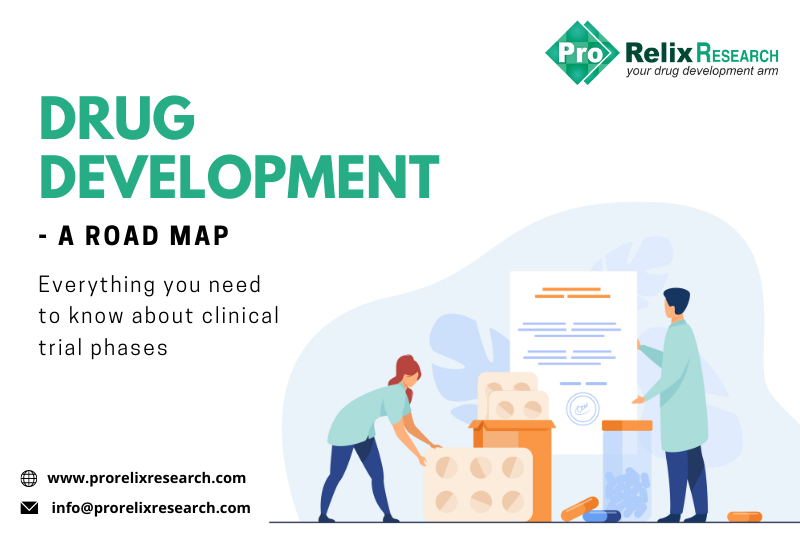Due to COVID-19 vaccine and treatment developments, clinical trials have been in the limelight lately. Before reaching patients, every medical intervention (from common cold pills to specialized cancer drugs) must pass through clinical trial phases. But what are the phases of clinical trials, and why do they matter? Each clinical trial phase has a different goal and separate hurdles to clear before a potential new treatment or medical device can move forward.
Drug Discovery:

Drug Discovery
The typical process begins when researchers develop new drugs in a lab. In order to reach the first clinical trial stage (human clinical trials/ medical trials), scientists research ideas in what is called the discovery phase. This step can take from three to six years. Typically, researchers will test drugs on animals before moving on to the first stage of clinical testing in humans.
Regulatory Bodies around the World:

Regulatory Bodies around the World
All Discovery Companies must file an investigational new drug (IND) application with the U.S. Food and Drug Administration (REGIONAL REGULATORY BOARD), MHRA (UK), CDSCO (India), TGA (Australia), HEALTH CANADA (Canada), MCC (South Africa), EMEA (European Union). The application includes key results of the preclinical research, the molecular structure of the drug to be investigated, details on the mechanism of the drug action thought to work in the body, a listing of any potential side effects as indicated by the preclinical toxicology studies, and manufacturing information. The IND should also provide a detailed clinical trial plan.
Alongside the IND application, all clinical trials must be approved and monitored by the institutional review board (IRB) or ethics committee (EC) at the institutions/ hospitals where the trials will take place. The IRB/EC has the responsibility to protect research participants. This process includes investigation product information and the development of informed consent documents, which will be required from all clinical trial participants.
Phases of Clinical Trials:

Phases of Clinical Trials
Once REGIONAL REGULATORY BOARD/MHRA/CDSCO/TGA/EMEA and IRB/EC approved the study, researchers, pharmaceutical companies, or biotechs can begin enrolling volunteers in a phase I trial.
It takes approximately ten years for a new treatment to complete the journey from initial discovery to the marketplace. Clinical trials phase alone normally takes six to seven years on average to complete. These phases can be either done by pharma companies on their or outsource the activities to the Contract Research Organization(CRO) to manage the complete clinical trial.
Phase I clinical trials:
Phase I clinical trials are conducted to test whether drugs are safe to use in humans. These trials are typically small — they enroll approximately 20 to 30 volunteers. Some phase I clinical trials only look for healthy volunteers, who may be compensated for participating. Other trials (Phase 1b) accept those with the condition the drug aims to target.
While the drug may help symptoms, a phase I trial’s goal is to prove safety, but not necessarily how effective the drug or device is. This trial phase can last anywhere from several months to a year. If Clinical Research Organization (pharma/biotech) finds the drug to be safe, it then moves forward to phase II. Around 70% of experimental drugs move past this stage.
Phase II clinical trials:
It is aimed that Phase II clinical trials are to test both the safety and effectiveness of a drug or medical device. Trials in this stage can last from several months to a few years, and recruit up to several hundred patients with the condition to take part.
Many phase II clinical trials are randomized, which means one group of participants receives the study drug/investigational product, while the other group receives a placebo or an existing, standard treatment. Other phase II studies are “blinded,” which means that neither the researchers nor the participants know who received the study drug.
In this phase, the drug has to be found safe and effective in order to move forward to phase III. Only 33% of drugs or interventions usually move on to the next phase.
Phase III clinical trials:
Phase III clinical trials are usually the largest — these trials test a potential treatment in hundreds to thousands of people in a randomized, blind study. This testing phase can last several years as the REGIONAL REGULATORY BOARD gathers thorough data about the drug’s effectiveness and potential side effects. Combining phase II and III trials together in phase II/III design has become increasingly more accepted and popular. This type of design can potentially shorten the timeline by allowing the data from the phase II patients to be used in the phase III analysis, thereby reducing the total number of trial patients.
During a public health emergency, such as the current COVID-19 pandemic, the REGIONAL REGULATORY BOARD may issue an Emergency Use Authorization (EUA), which is a mechanism to facilitate the availability and use of medical countermeasures, including vaccines. While the process for COVID-19 vaccines has been greatly accelerated, the clinical trials being conducted adhere to the same rigorous standards set forth by the REGIONAL REGULATORY BOARD for other potential treatments and devices.
Once a potential treatment or device makes it through a Phase III clinical trial stage, a pharmaceutical company can request REGIONAL REGULATORY BOARD approval to start marketing the drug. A pharmaceutical company may submit a New Drug Application (NDA) or a biologics license application (BLA) to the REGIONAL REGULATORY BOARD. The REGIONAL REGULATORY BOARD then reviews results from all stages of the trial to determine whether it will approve the drug and allow the pharmaceutical company to begin marketing it to the public.
Phase IV clinical trials:
Also known as “Post-Approval Research and Monitoring”, Phase IV takes place after a drug or device has been approved. In this phase, pharmaceutical companies monitor a drug’s long-term impact. This phase is crucial, because it may take a few years for longer-term side effects to appear.
Importance of Clinical Research Management and Process:

Importance of Clinical Research Management and Process
With various COVID-19 vaccine trials underway, a seamless clinical research process has never been more critical.
Clinical trials are the backbone of any healthcare system, facilitating ongoing research that is critical to developing medicines that can improve patient lives. In a climate that now demands social distancing to keep patients safe, we must continue to implement bold new practices to conduct trials because of COVID-19.
Instead of face-to-face clinic visits, a core safety risk mitigation strategy now allows participants to check in remotely and complete their activities using telemedicine and other technologies. While the industry worked quickly to adopt these new protocols, many changes are already widely accepted and expected to continue even after the pandemic subsides.
In response to this shift, as an industry, we must focus on leveraging technology and scientific knowledge to help sponsors implement thoughtful and scalable solutions to keep patients engaged and involved in continuing clinical trials. There must be an industry-standard showing how trials are designed to set patients up for success. Below, some of the recommendations for study sponsors to follow in order to keep trials going and patients cared for.
Patient engagement is critical:
It is important to continue to deploy technology solutions to help keep patients engaged and increase the quality of study data while continuing to meet regulatory requirements. Tools such as electronic data capturing and virtual clinical outcome assessments are able to help ensure that trials are set up with the patient experience in mind.
Simplification leads to success:
As an industry, we must continuously look to simplify study participation for patients and sites. This includes collecting clinical data remotely without overcomplicating the patient experience and making studies engaging to participate in—even with fewer on-site visits.
Trial designs must be organized:
The Clinical Trial Design must state clear objectives, set timelines, assign appropriate resources and staff, communicate details and continuously assess associated risks. This will prevent delays and issues during the initiation process while also accounting for milestones and mapping out key stakeholders’ involvement throughout the process. It is critical that sponsors and investigators ensure the blueprint for data quality standards remains high, no matter where or how the studies are taking place.
Conclusion:
Clinical trials can’t move forward without research volunteers, investigators, contract labs, CRO. As an Integrated CRO, ProRelix Research has made the process of adding clinical trial sites into our database through our webpage and our mobile technology app will also help the potential patients/ volunteers to look for suitable clinical trials in the region. We specialize in a wide range of tools and resources to aid patient and investigator recruitment, remain current with industry trends and business practices and strengthen organizational procedures.
Our strong database and a fine assortment of industry resources make us an adept organization. In a highly fragmented industry, we are one of a group of organizations with the capability and expertize to conduct clinical research. We have the operational flexibility to provide drug development services on a stand-alone basis or as part of an integrated full-service solution.
Start your search today, and help advance medical research for everyone.






